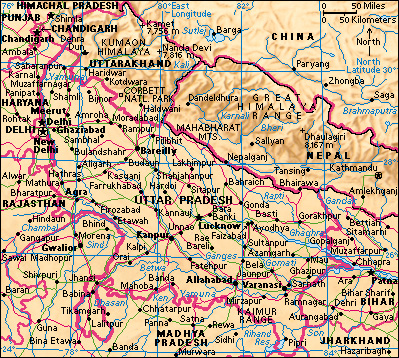Ayodhya (pop. 55,890) is a small city in the Indian state of Uttar Pradesh. Hindus revere it as the birthplace of the Hindu deity Rama, and it is one of the most important Hindu pilgrimage sites. A centuries-old Islamic mosque, now destroyed, once stood on a site in Ayodhya that many Hindus claim is sacred to their religion. The conflict over the site has led to much violence between Hindus and Muslims.

The city of Ayodhya has a long history. Ancient Hindu epics mention the city, and Buddha may have spent part of his life there. In the 500’s B.C., it was the capital of the Kosala kingdom. The city was also known as Oudh or Awadh. At different historical periods, the surrounding region has also been known by these names. In the 1520’s, Babur, the first Mughal emperor, built the Babri Masjid (Mosque of Babur) in Ayodhya. Many Hindus argued that the mosque was built on the ruins of a temple that once stood on the site of the birthplace of Rama. Beginning in the 1930’s, the mosque became the center of disagreements between Hindus and Muslims. Vandals damaged it on several occasions.
In the 1980’s, Hindu extremists began calling for the destruction of the mosque and the construction of a Hindu temple in its place. In 1992, large groups of Hindu activists descended upon Ayodhya and destroyed the mosque in a single day. An extremist Hindu organization, the Vishwa Hindu Parishad (VHP), later announced plans to build a temple to Rama on the site of the mosque. Disputes over these plans and over claims to the site led to rioting and violence between Hindus and Muslims throughout India.
In 2019, India’s Supreme Court recognized the right of Hindus to build a temple to Rama on the site, but also called the destruction of the Muslim mosque a crime against the rule of law. The court ordered that the Muslims be given land elsewhere to build a new mosque. In 2020, India’s Prime Minister, Narendra Modi, laid the foundation stone for the new temple to Rama. The temple opened in 2024.
